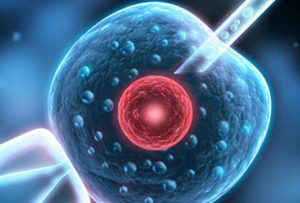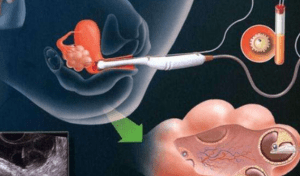Third generation IVF in the United States combines advanced IVF technology with cutting-edge genetic techniques to provide high-quality reproductive healthcare to couples who are facing fertility challenges. This technology not only solves patients' fertility problems, but also brings hope and happiness to many families. In this article, we will detail the advantages, cost and process of third-generation IVF technology in the United States, as well as the secret to its success rate.
First, the United States third-generation IVF technology how to
Advanced technology level
The United States is a global leader in assisted reproductive technology. Third-generation IVF technology, known as preimplantation genetic testing (PGT), is well established in the United States. This technology offers patients greater safety and success by accurately screening for healthy embryos, increasing pregnancy success rates, and reducing the risk of passing on genetic disorders.

Medical facilities and specialized teams
The United States has some of the most advanced medical equipment and highly qualified medical professionals in the world. The Fertility Center is staffed with experienced fertility specialists, embryologists and genetic counselors who are able to provide individualized treatment plans and comprehensive medical care based on each patient's specific situation.
Strict regulation and quality control
The medical industry in the United States is highly regulated and has high standards for IVF clinics and laboratories. This ensures the safety and efficacy of the treatment process as well as increasing the success rate of the treatment.
Legitimate third-party assisted reproduction
In the United States, third-party assisted reproduction is legal within the framework of the law, including egg donation, sperm donation and surrogacy. This provides more options for patients with special needs, enabling them to realize their fertility dreams.
Second, the United States three generations of IVF costs
medical cost
The medical cost of third-generation IVF in the United States is approximately $25,000 to $35,000 USD. Costs include various components such as preoperative testing, ovulation stimulation medications, egg retrieval, monosperm injections, blastocyst cultivation, and genetic screening. These costs vary depending on the hospital and the experience of the doctor.
living expense
In addition to medical expenses, patients need to consider the cost of living in the U.S., including lodging, meals, and transportation. These costs can range from approximately $15,000 to $20,000, depending on the patient's individual needs and standard of living.
total cost
Combining medical and living costs.The total cost of third-generation IVF in the U.S. ranges from about $40,000 to $55,000. Patients need to fully consider their financial situation and budget before making a decision.
Third, the detailed process of three-generation IVF in the United States
1,Pre-consultation and examination
Patients begin with a remote consultation with a U.S.-based fertility specialist to discuss fertility history, health status, and reproductive needs. A series of physical exams are performed in China, including hormone level testing, AMH (anti-Müllerian Hormone) measurement, pubic ultrasound and semen analysis. The reports of the tests will be sent to a doctor in the United States for evaluation.
2,Preparing for your trip to the U.S.
Patients need to apply for a U.S. visa and prepare the relevant documents according to the doctor's recommendations. The doctor will develop a personalized treatment plan based on the patient's specific situation and arrange an appropriate time to travel to the United States.

3,Ovulation induction and egg retrieval
Upon arrival in the U.S., patients will undergo a physical review to confirm that they are correct and begin using ovulation stimulating medications to stimulate the ovaries to produce multiple eggs. Follicular development is monitored through ultrasound and blood tests, and the medication dosage is adjusted. When the follicles are mature, an egg retrieval procedure is performed, usually under anesthesia. At the same time, the male partner undergoes sperm retrieval.
3,Fertilization and embryo culture
In the laboratory, sperm and egg are combined for fertilization and cultured to the embryonic stage. Blastocysts that have reached day 5 or 6 of development are biopsied for trophoblast cells.
4,Genetic testing and embryo transfer
Genetic testing of biopsy cells to screen for chromosomal abnormalities and genetic disorders. Healthy embryos are selected for transfer. The patient's uterine lining is prepared prior to the transfer to improve the success rate of embryo implantation.
5,Luteal support and pregnancy tests
After the transfer, the patient will need to use medications such as progesterone to support luteal function and help the embryo to settle and maintain the pregnancy. About 10 to 14 days after the transfer, a blood test is performed to confirm successful conception.
6,Pregnancy monitoring
If conception is successful, patients will continue to undergo pregnancy monitoring, including ultrasound examinations, to ensure the health of mother and baby. The entire process may vary depending on individual circumstances and clinic protocols, and patients are required to work closely with their doctors and follow their recommendations and precautions.
Fourth, the secret of the high success rate of IVF in the United States
Third-generation in vitro fertilization (IVF)
Third-generation IVF technology (PGT) in the United States is the key to improving success rates. This technology screens for chromosomal abnormalities and genetic defects by extracting cells from the periphery of the blastocyst for genetic testing so that the healthiest embryos can be selected for transfer. This not only improves pregnancy success rates, but also prevents the transmission of genetic diseases.
State-of-the-art embryo laboratory
Embryology laboratories in the United States are equipped with state-of-the-art equipment and technology, including highly efficient blastocyst incubators and specialized culture solutions. These equipment and techniques mimic the environment of the mother's uterus to provide optimal growth conditions and ensure healthy embryo development.

Excellent medical team
Reproductive centers in the United States are staffed by experienced fertility specialists and embryologists with extensive clinical experience and expertise. The team of professionals is able to develop a personalized treatment plan for each patient and provide comprehensive support and guidance throughout the process.
Strict regulation and quality control
Reproductive medicine in the United States is highly regulated to ensure that every aspect of the process meets high standards of quality control. This not only guarantees the safety and efficacy of the treatment, but also greatly increases the success rate.
summarize
The third generation IVF technology in the United States provides high-quality reproductive medical services with its advanced technology, professional medical team and strict regulatory system. Despite the higher cost, its high success rate and safety make it the first choice for many couples with fertility needs. Before making a decision, patients should fully understand the costs and processes involved and have a detailed consultation with a medical professional to ensure the best possible outcome.






